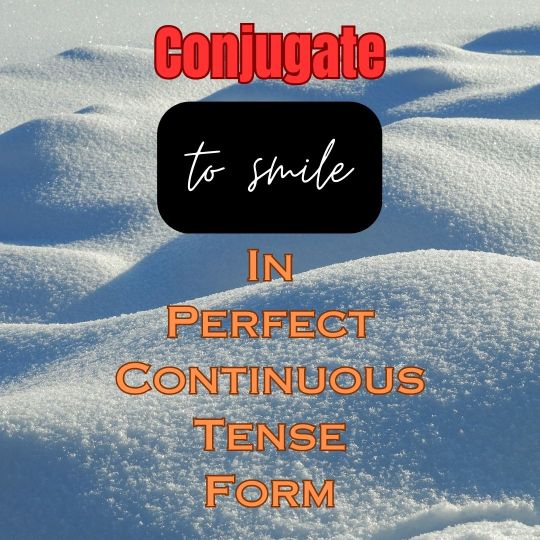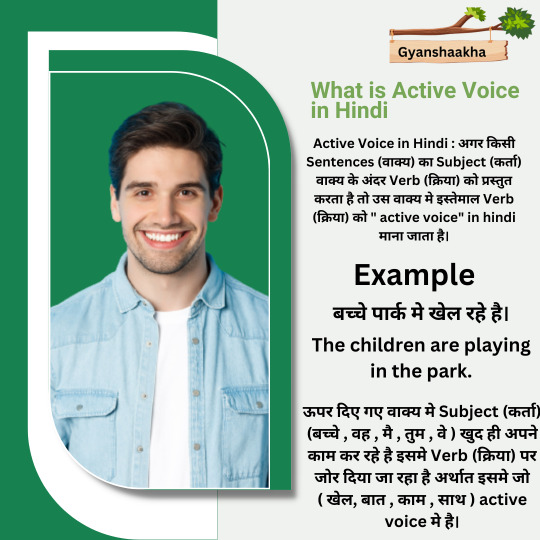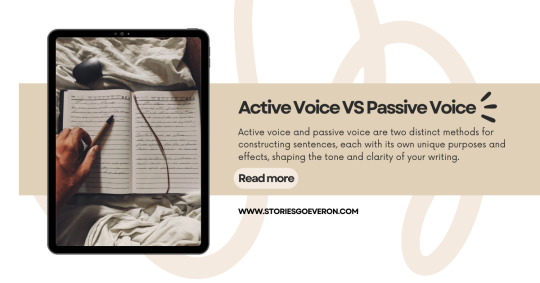#activevoice
Explore tagged Tumblr posts
Text
How to build the passive voice in Arabic easily The passive voice is rarely used in Arabic. So it is no coincidence that it is a popular source of errors, especially when translating. Reason enough to review the most important rules. https://arabic-for-nerds.com/grammar/arabic-passive-voice/?feed_id=5613&utm_source=Tumblr&utm_medium=geralddrissner&utm_campaign=FS%20Poster
#GRAMMAR#ACTIVEVOICE#HEBREW#PASSIVE#PASSIVEVOICE#VVERB#VIIVERB#VIIIVERB#اِفْتَعَلَ#المَبْنيللمَجْهولِ#الْمَعْلُومُ#اِنْفَعَلَ#تَفَعَّلَ#نائِبُالْفاعِلِ#GERALDDRISSNER
0 notes
Text
Conjugation to smile in Perfect Continuous Tense Form

This table covers all forms of the verb “to smile” in the Indicative mood, the Active voice for the Perfect Continuous group of tenses, including affirmative, question, and negative forms for all persons
Person Present Perfect Continuous Past Perfect Continuous Future Perfect Continuous Future Perfect Continuous in the Past Affirmative I have been smiling I had been smiling I will have been smiling I would have been smiling You have been smiling You had been smiling You will have been smiling You would have been smiling He/She/It has been smiling He/She/It had been smiling He/She/It will have been smiling He/She/It would have been smiling We have been smiling We had been smiling We will have been smiling We would have been smiling You have been smiling You had been smiling You will have been smiling You would have been smiling They have been smiling They had been smiling They will have been smiling They would have been smiling Question Have I been smiling? Had I been smiling? Will I have been smiling? Would I have been smiling? Have you been smiling? Had you been smiling? Will you have been smiling? Would you have been smiling? Has he/she/it been smiling? Had he/she/it been smiling? Will he/she/it have been smiling? Would he/she/it have been smiling? Have we been smiling? Had we been smiling? Will we have been smiling? Would we have been smiling? Have you been smiling? Had you been smiling? Will you have been smiling? Would you have been smiling? Have they been smiling? Had they been smiling? Will they have been smiling? Would they have been smiling? Negative I have not been smiling I had not been smiling I will not have been smiling I would not have been smiling You have not been smiling You had not been smiling You will not have been smiling You would not have been smiling He/She/It has not been smiling He/She/It had not been smiling He/She/It will not have been smiling He/She/It would not have been smiling We have not been smiling We had not been smiling We will not have been smiling We would not have been smiling You have not been smiling You had not been smiling You will not have been smiling You would not have been smiling They have not been smiling They had not been smiling They will not have been smiling They would not have been smiling Conjugation to smile in Perfect Continuous Tense Form Conjugation of to smile in Perfect Tense Form Conjugation of to smile in Continuous Tense Form Conjugation of to smile in Indefinite Tense Form Word Formation in English Complex Sentence With Multiple Dependent Sentences I wish, Would, and If Only in Conditionals Subordinate Clauses Read the full article
#activevoice#affirmative#allpersons#conjugate#for#indicative#mood#negative#perfectcontinuous#question#tenseform#tosmile
0 notes
Text

😊😊😊Hello Friends ! How are you
Do you know active voice
#gyanshaakha#activevoice#grammer#camillegrammer#englishgrammertoday#englishgrammertips#grammernazi#education#educational#words#sentences#sentencestructure#ProverbsChallenge#englishclass#english#learnenglish
1 note
·
View note
Photo

Vamp up the power of your writing by turning your adjectives into verbs. Try it. Instead of “He was tired,” you could say “He ___________.” Comment with your strongest verb. #writingtips #activevoice
0 notes
Text
Active Voice VS Passive Voice
Active and passive voice have distinct purposes and effects on writing tone and clarity. #creativewriting #writingtips #tipsandtricks #activevoice #passivevoice #voice
Active voice and passive voice are two distinct methods for constructing sentences, each with its own unique purposes and effects, shaping the tone and clarity of your writing. Let’s delve deeper into these differences and explore when to effectively utilize each: Active Voice Active voice constructions feature a subject that performs the action, which is directed towards an object. These…

View On WordPress
#Creative writing#Fiction#Novel Writing#Passive voice#Short Story Writing#Voice#Writing#Writing tips
0 notes
Text
14 Copywriting Tips for Your Sales Page

14 Copywriting Tips for a Sales Page That Converts
Every element of your sales page is important. You should work hard on the layout, images, call-to-action, headline, and design features. But the copywriting is also vitally important. It needs to speak directly to your audience and effectively communicate the benefits of your product to them. Take all the time you need to plan, write, and edit your sales page's copy. Here are 14 essential copywriting tips to help you get it right. Think of it as a slide in a fair ground Your sales page is like a slide. The reader gets on it at the headline, and slides smoothly down the page to the call-to-action, where they buy. Plan so that each part answers the questions or addresses the objections the person has in mind at that point. Discuss benefits before features You should explain the features of your offer, but always put the focus on benefits. The difference is that the benefits show how the product affects the user's life positively. Write conversationally Write so that it reads like a friend talking to the reader. Avoid jargon and formal language. At the same time, avoid slang, inappropriate language, or grammar or spelling mistakes. Know your audience Copywriters spend a great deal of time getting to know their audience well. Create a persona for your audience and pay especially close attention to their pain points and problems. Address them in your copy. Use your audience's language Write in your audience's language. Get to know them online and see how they talk. Use the types of phrases and wording they use so you can speak directly to them. Use active voice Use the active voice and not the passive voice. In the active voice, the subject performs the action. Active voice makes your text more interesting, makes it move, and makes it easier to understand. For example: Marilyn mailed the letter is the active voice, whereas the letter was mailed by Marilyn is the passive voice. Trim your copy After you write your copy, trim and pare it down to just the essentials. It should be laser-focused. There should be no fluff and nothing that doesn't lead directly to guiding the person to purchase. Be specific Wherever possible, be specific. Mention specific numbers. If your product is great, explain exactly why. When you go through and edit your work, remove or clarify anything that's vague. Appeal to emotions Which emotions are at the forefront of your audience's mind when they look for solutions to their problems? Appeal to these emotions in your text. Use curiosity Write a headline that makes people sit up and ask, "What?" Try to make the end of each section like the cliffhanger of a novel that makes the person want to read the next part. Surprise the reader Take a left turn and say something unexpected in your copy. Throw a curve ball. Surprises delight people and make your sales page interesting to read. Don’t be parochial If you want to appeal to a global audience, then don’t use jargon terms, local expressions, or typical examples from your country. These will confuse people from other countries and they won’t buy. Tell stories Wherever possible, include stories in your copywriting. People love stories and they're memorable. A typical way to do this is to tell the story of how you suffered from the same problem as the reader but hit upon a solution (which you're now offering them). Don't overload the reader You might be tempted to pack every single detail about your product into your sales page, but don't. Keep it focused and give them just the information they need to make the right decision. Everything you write on your page should be directly related to getting the reader to buy. If your copy is geared towards this aim, you'll see conversions.








Energy 5-2-6 Join Ambit Energy Why Ambit Works The Ambit Energy Story Read the full article
#activevoice#appealtoemotions#bespecific#benefitsbeforefeatures#copywritingtips#don'toverloadyourreader#don’tbeparochial#fairgroundslide#knowyouraudience#paredownyourcopy#surprisethereader#tellstories#tellyourstory#usecuriosity#useyouraudience'slanguage#writeconversationally
1 note
·
View note
Photo

Past Continuous Tense is used to states the continuous actions of the Past. To understand "Past Continuous Tense and it's usage", please follow and share "www.englishsunglish.com". #englishgrammar #englishlanguage #englishgrammartips #partsofspeech #verb #tense #pastcontinuoustense #assertivesentence #sentencestructure #activevoice #verbs https://www.instagram.com/p/CSjeTyoIyTu/?utm_medium=tumblr
#englishgrammar#englishlanguage#englishgrammartips#partsofspeech#verb#tense#pastcontinuoustense#assertivesentence#sentencestructure#activevoice#verbs
0 notes
Text
Active and Passive Voice
Active and Passive Voice - The Forms of Sentences
Active Voice and Passive Voice are the forms of sentences. We can write these for the same meaning.
Voice is a form of verb showing whether the subject acts or has acted to it. That is, sentences are in either active or passive voice.
Here, we shall see the forms of sentences in the manner of-
characteristics
pattern
example with explanation
Active Voice
In an active form, the subject acts.
Definition
We can define this as;
An active voice is a sentence in which a verb shows that subject does an action.
Characteristics of active voice
We shall see the characteristics of this form.
In an active voice-
The subject of a sentence in an active form is at the starting of the sentence.
The subject is followed by the form of ‘to be’, verb, and object.
We can say that a verb is in the Active Voice.
An active voice tells clearly about the actor who has done it.
Pattern of sentence
The pattern of a sentence in this voice is-
Subject+ Verb+ Object
Example with explanation
Here is an example with explanation -
My son has built a website.
In the above sentence, we have a subject (my son), a verb (has built), and the object of the verb (website).
Passive voice
In passive voice, the action is done by someone.
Definition
We define this form as;
Passive voice is the sentence in which the form of a verb shows that an action is done to the subject.
Characteristics of passive voice
The Characteristics of this form are-
When we change the sentence from active to passive voice, the object becomes the subject.
We can use sentences with only transitive verbs in the passive voice. That is, we can change the sentences having objects into this voice.
This form may or may not tell clearly about the actor who has done it.
We should add 'by' in a sentence to make clear the action, who has done it.
Pattern of sentence
The pattern of a sentence in this voice is as -
Subject+ form of ‘to be + past participle of verb+ by + object
Example with explanation
The website has been built.
Or
The website has been built by my son.
In the above sentence, we have-
the direct object of the verb (a website)
the verb is in passive form (has been built)
The subject is missing, but we can add ‘by’ and make the subject clear.
We can have a passive and active form of eight tenses with examples of three persons to understand easily.
0 notes
Photo

New blog on Active Voice is live :) https://robynweightman32.wixsite.com/robynweightman/home/author/?fbclid=IwAR0G6zdEag2japP2H57_lVtjxLQEXTZ8YxfDdhZJVtFCPEGQIy7UTbM2zzY . . . . . . . #passivevoice #blog #blogger #writing #writingadvice #author #writer #amwriting #writingtips #authortube #bookstagram #activevoice https://www.instagram.com/p/CJBBl6pgOCM/?igshid=1fswym43m7td1
#passivevoice#blog#blogger#writing#writingadvice#author#writer#amwriting#writingtips#authortube#bookstagram#activevoice
0 notes
Text
Grammar Police!
I know, I know. I hate the Grammar Police. The people who “walk” up behind you online and correct every little mistake. Sometimes we have bad days. I often get annoyed seeing their, when someone is referring to a place there (adverb) or they’re when someone means their. For instance: Their going to the club wouldn’t be grammatical because their is possessive. Instead, you would write: They’re…
View On WordPress
3 notes
·
View notes
Text
All forms of "to smile" in Indefinite group of Tenses

This table provides all forms of the verb “to smile” in the Indicative mood, the Active voice for the Indefinite group of tenses, covering affirmative, question, and negative forms across all persons
Person Present Simple Past Simple Future Simple Future in the Past Affirmative I smile I smiled I will smile I would smile You smile You smiled You will smile You would smile He/She/It smiles He/She/It smiled He/She/It will smile He/She/It would smile We smile We smiled We will smile We would smile You smile You smiled You will smile You would smile They smile They smiled They will smile They would smile Question Do I smile? Did I smile? Will I smile? Would I smile? Do you smile? Did you smile? Will you smile? Would you smile? Does he/she/it smile? Did he/she/it smile? Will he/she/it smile? Would he/she/it smile? Do we smile? Did we smile? Will we smile? Would we smile? Do you smile? Did you smile? Will you smile? Would you smile? Do they smile? Did they smile? Will they smile? Would they smile? Negative I don't smile I didn't smile I won't smile I wouldn't smile You don't smile You didn't smile You won't smile You wouldn't smile He/She/It doesn't smile He/She/It didn't smile He/She/It won't smile He/She/It wouldn't smile We don't smile We didn't smile We won't smile We wouldn't smile You don't smile You didn't smile You won't smile You wouldn't smile They don't smile They didn't smile They won't smile They wouldn't smile Conjugation of the verb “to smile” (Indicative Mood, Active Voice, Indefinite group of Tenses) Word Formation in English Complex Sentence With Multiple Dependent Sentences Direct (Quoted) and Indirect (Reported) Speech Wh-questions (Interrogative Sentence) Read the full article
0 notes
Photo

Vamp up the power of your writing by turning your adjectives into verbs. Try it. Instead of “He was tired,” you could say “He ___________.” Comment with your strongest verb. #writingtips #activevoice
0 notes
Video
instagram
Writing Wednesdays: Scientific Writing Tips Article used: https://apsjournals.apsnet.org/doi/abs/10.1094/PHYTO.2001.91.12.1166 As scientific writers, you will have to use passive voice, but not all the time. So find sentences where you can make your writing come more alive by using active voice. Added benefit: active voice engages readers more! #scientificwriting #writing #publishing #writingwednesday #activevoice #activevoiceandpassivevoiceuses https://www.instagram.com/p/CA-RbGdHzqt/?igshid=19oknqbqhnqh8
0 notes
Text
Arsenio's ESL Podcast: Season 3 - Episode 71 - Grammar - The Passive with Say, Know, Believe, Thought
Arsenio’s ESL Podcast: Season 3 – Episode 71 – Grammar – The Passive with Say, Know, Believe, Thought
Here’s another tough episode on how the passive works with these stative verbs. Again, I’ve gone over state verbs in the last two podcasts, so let’s hope you have an understanding of them already.
It + be + past participle (of believe, claim, expect, know, report, say, think) + that.
It is said that dogs can communicate.
It was claimed that the president knew about the situation.
W…
View On WordPress
#activevoice#efl#english#englishadjectives#englishasasecondlanguage#englishconfidence#englishcourse#englishfirst#englishfirstjapan#englishforeignlanguage#englishfriends#englishgrammar#englishidiom#englishidioms#englishinjapan#englishjapan#englishlanguage#englishlanguagelearning#englishlearning#englishlearningjapan#englishlistening#englishphrases#englishpronunciation#englishreading#englishslang#englishslangg#englishspeaking#englishstudents#englishteacher#englishtest
0 notes
Link
[READING] Outline of Style: 10 Lessons in Clarity and Grace
Clarity
Express the main characters as the subjects of verbs
Express their actions as verbs
Avoid nominalizations
Active or Passive Voice?
Must your readers know who is responsible for the action?
Does the active or passive voice let you arrange words more smoothly?
Will active or passive verbs create the most consistent sequence of subjects?
Cohesion = "a sense of flow" (when the parts fit together smoothly) 1. First principle: move from the old to the new 2. Second principle: end with the new 3. First things readers want to know = the topic (what it’s about)
Coherence = "a sense of focus" (when the unity of the whole is clear) 1. First principle: quickly identify the "topics" (what it is about) 2. Second principle: show how these topics are a "connected set" 3. Begin sentences with something familiar to your readers
Concision "compression" (being brief and to the point) A. Principles of concision: 1. Delete meaningless words ("kind of, actually, generally, certain," etc.); 2. Delete doubled, redundant words ("full & complete, each & every," etc.); 3. Delete what readers can infer (e.g. "to anticipate in advance"); 4. Replace a phrase with a word (e.g. "due to the fact that" = "since"); 5. Change negatives to positives ("not different"="similar;" "not many"="few") B. Pruning Metadiscourse 1. Metadiscourse = referring to the process of writing as it takes place: a. the writer’s intention: "to sum up, candidly, I believe, therefore, however" b. the reader’s response: "note that, consider now, as you see" c. the structure of what is being written: "first, second, third" 2. Prune unnecessary metadiscourse, e.g.: "In conclusion the last point which I would like to make in regard to…" 3. The "Goldilocks Rule": "Not too much, not too little, but just right."
Avoid interruptions, sprawl, and dangling modifiers
Start sentences with their main subjects
Get to the verb and its object quickly
Reduce relative clauses to phrases by deleting who/that/which is/was, etc.
Break subordinate clauses into their own sentences
Use running modifiers (commas & repetition) to write long, clear sentences
0 notes
Photo

CHINESE PERSONAL PRONOUNS: SUBJECT VS OBJECT PRONOUNS (I VS ME) http://www.howtosayinchinese.com/chinese-personal-pronouns-i-vs-me/ From Active Voice (A) to Passive (P) Voice sentence construction. #howtosayinchinese #learnchinese #learnmandarin #chinese #mandarin #pinyin #chineselanguage #chinesegrammar #speakchinese #speakmandarin #easychinese #chinesetoenglish #englishtochinese #chineseaudio #xuezhongwen #pronouns #activevoice #passivevoice #汉字 #华文 #中文 #汉语 #华语 #学中文 #学华语 #说中文 #讲华语 #汉语拼音 #拼音
#pronouns#activevoice#speakchinese#xuezhongwen#englishtochinese#chineseaudio#华语#讲华语#passivevoice#pinyin#learnchinese#learnmandarin#汉语#mandarin#chinesetoenglish#chineselanguage#拼音#speakmandarin#中文#说中文#chinese#chinesegrammar#学华语#汉语拼音#howtosayinchinese#学中文#汉字#华文#easychinese
0 notes